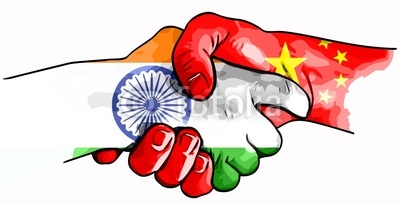 中印两国商务部长下周一将在新德里举行会谈,两国间的贸易差额将成为一个备受争议的问题。印度对中国日益扩大的贸易逆差令印度领导人大为惊慌。但眼下我们更有必要保持冷静的头脑,印度方面尤其要认识到中印贸易规模日渐扩大给印度带来的潜在巨大收益。
中印两国商务部长下周一将在新德里举行会谈,两国间的贸易差额将成为一个备受争议的问题。印度对中国日益扩大的贸易逆差令印度领导人大为惊慌。但眼下我们更有必要保持冷静的头脑,印度方面尤其要认识到中印贸易规模日渐扩大给印度带来的潜在巨大收益。
上述观点一开始可能难以令人接受。去年中国对印度的出口规模达560亿美元,相比之下印度对中国的出口额只有190亿美元。鉴于两国之间的宿怨,巨大的贸易逆差引起了新德里的关注。去年12月,印度国家安全委员会秘书处(National Security Council Secretariat)甚至暗示说,印度对中国的贸易逆差可能会给印度带来国家安全问题。
印度内阁上个月批准对出口到印度的发电设备征收21%的关税,这似乎主要针对的是中国出口到印度的产品。中国制造的发电设备在印度进口的所有发电站设备中占比达40%。在不违背全球贸易承诺的前提下,印度无法将矛头直接对准中国。
但这是对待贸易问题的一种非常短视的方法。这种做法忽视了印度决策者应该关注的更为重要的问题。这个问题不是印度对中国的贸易逆差,而是印度的基础设施建设整体落后。印度长期电力短缺(上个月的全国大停电就是一个证明)加上公路、机场等基础设施建设落后是制约印度经济增长的一个主要因素。进口中国产品有助于解决这一问题,这些进口产品本身并非问题所在。
印度进口自中国的绝大部分商品是生产资料,比如电力机械、核反应堆、锅炉、船舶、渔船以及民用工程项目所用到的产品。诸如玩具、鞋类等消费品在中国出口到印度的商品中占比不到2%。印度进口自中国的这些生产资料一般成本较低(这多亏了所谓“中国价格”),而中资银行提供的极为有利的贸易融资进一步降低了印度的进口成本。
当然,中国通过向印度提供这样的优惠条件来提高自身工业产能和就业率,这种做法或许无法持续。但新德里方面应该关心的问题是,由于北京的产业政策,印度以较低的成本拥有了更多生产资料。
中国对印度的大量出口可以转化为印度的繁荣。鉴于印度拥有强大的工程设计能力,庞大的国内市场,巨大的劳动力资源和低廉的劳动力成本,印度完全可以成为和中国一个级别的全球制造业大国。基础设施薄弱是印度目前还不是制造业大国的主要原因。来自中国的成本较低的生产资料有助于印度加快弥补这一弱点。
更好的基础设施也可以帮助印度成为一个全球性的农业大国。印度耕地占土地总面积的比例是中国的四倍多。但据估计,印度40%的粮食在进入市场前就已经腐烂。如果能有更好的道路和储存设施,印度可以成为世界上最大的农产品出口国之一,而中国当然可以成为其最大的客户之一。
有鉴于此,在印度领导人即将与中方领导人举行会晤之际,他们应该在当前印中贸易逆差所带来的好处上采取务实态度,并推进更大程度上的自由贸易以更多地获益。眼下,他们可以说是在制造一些噪音,但总体来讲他们的借口只是要收窄印度对中国的贸易逆差。
比如,印度工商部长夏尔马(Anand Sharma)最近说道,他将敦促中国降低对印度输华产品的壁垒,特别是印度拥有全球公认实力的药品和IT服务。鉴于中国大力扶植国内行业的一贯做法,夏尔马的要求很合情合理。
不过,印度政企领导人应该谨记一点,短期内,中国的大门敞得更大不会对贸易逆差带来多大影响。目前,印度在大部分制造领域都没有比较优势。即便是在制药业,中国在有效药物成分的出口方面也比印度的规模要大得多。实际上,印度需要从中国进口有效药物成分。
印度制药业确实比中国有优势:印度有更多获得美国食品和药物管理局(FDA)批准的制药厂、能够更好适应西方监管环境,并拥有更强的产品营销能力。不过在与中国的竞争中,这些优势并不是特别的有效。若在中国国内,印度仿制药将难以与成本更低的中国本土产品竞争。
总之,印度在全球的药品出口总额约为70亿美元。就算中国开始从印度进口价值35亿美元的药品(目前约为1亿美元),也很难令印中370亿美元的贸易逆差有多少改变。
更广而言,印度不该把中国企业赶跑,而是应该鼓励它们加深与印度经济的联系。华为(Huawei)、中兴(ZTE)、上海电气(Shanghai Electric)、联想(Lenovo)、海尔(Haier)、阿里巴巴(Alibaba)和其他很多公司在国内市场都面临经济增长大幅放缓的局面,它们迫切希望从印度的增长机遇中获益。对于其中一些公司来说,印度已经是它们仅次于中国的第二大收入来源,并将很快变得更加重要。印度在即将进行的讨论中首要关注的不应是贸易,而应该更多地关注双方能够做些什么来加快中国公司在印度国内的投资和生产。
长期以来,印度和中国在政治、经济和战略上一直是对手,未来这种关系可能会持续一段时间。不过,就两国贸易关系而言,现在新德里应该安心地放手,让经济顺其自然地发展,也就是让不断繁荣的贸易自由发展。
The commerce ministers of India and China meet Monday in New Delhi, and the trade balance between the two countries is set to be a matter of particular controversy. Indian leaders have become alarmed by their growing trade deficit with China. Yet this is a good time for cooler heads to prevail, and especially for the Indian side to recognize the potentially huge gains to be had from increasing trade with China.
That will at first be a tough sell. China's $56 billion exports to India last year dwarfed the $19 billion exports from India to China. Given the history of animosity between the two countries, this has sparked concern in New Delhi. In December, India's National Security Council Secretariat even suggested that the trade deficit with China may pose security concerns.
India's cabinet last month approved a 21% tariff on imports of power generation equipment into India. This appears to be aimed primarily at Chinese imports, which account for 40% of all power-plant imports into India; New Delhi couldn't target China explicitly without running afoul of global trade commitments.
But this is a profoundly short-sighted approach to the trade issue, which ignores what should be the far bigger concern of Indian policy makers─not the trade deficit with China, but the country's overall infrastructure deficit. India's chronic shortfall of electricity (witness last month's blackouts), roads, airports and the like is a major constraint on growth. Imports from China are part of a solution to this problem, not a problem in their own right.
The vast majority of imports from China consist of capital goods such as electrical machinery, nuclear reactors, boilers, ships, boats and items for civil engineering projects. Consumer goods such as toys, footwear and the like account for less than 2% of imports from China. These capital goods tend to come at a lower cost (thanks to the so-called China price), and are made cheaper still by extremely advantageous financing offered by Chinese banks.
Of course, China offers such terms as a way to boost its own industrial capacity and employment, perhaps unsustainably so. But all that should matter to New Delhi is that India enjoys more capital equipment at lower costs as a result of Beijing's industrial policies.
That boon from China trade could translate into an India boom. Given India's strong engineering skills, large domestic market, vast labor pool and low labor costs, the country can be a global manufacturing power in the same league as China. Weak infrastructure is the primary reason why it is not. Lower-cost capital goods from China help accelerate India's drive to redress this weakness.
Better infrastructure could also help India become a global agricultural power. The proportion of India's arable-to-total-land is over four times as large as China's. But an estimated 40% of India's food grain rots before reaching the market. With better roads and storage facilities, India can become one of the world's largest agricultural exporters with, yes, China as its biggest customer.
So as Indian leaders head into meetings with their Chinese counterparts, they need to be pragmatic about the benefits of their current trade deficit with China─and push for freer trade to reap even more rewards. At the moment, they are making some noises to this effect but generally in the name only of reducing the trade deficit.
For instance, in recent comments, Commerce Minister Anand Sharma said he will press China to reduce barriers to imports from India─notably in pharmaceuticals and IT services where India has recognized global strengths. Given China's record of coddling domestic industry, this would be eminently sensible.
However, India's political and business leaders should keep in mind that, in the short run, more open doors in China would have not much impact on the trade deficit. India does not currently enjoy comparative advantages in most areas of manufacturing. Even in the case of drugs, China is a much bigger exporter of active pharmaceutical ingredients (APIs) than India. In fact, India imports APIs from China.
India's pharma sector does have advantages over China's: a much larger number of U.S. Food and Drug Administration-approved plants, better ability to navigate the Western regulatory landscape, and stronger product marketing skills. However, these advantages are not particularly deployable to China. India's generic drugs would have a tough time competing with lower-cost domestic products within China.
In any case, India's worldwide exports of pharmaceutical products add up to about $7 billion. Even if China were to start importing $3.5 billion worth of drugs from India (up from about $100 million at present), it would hardly make a dent in the $37 billion trade deficit between the two countries.
More broadly, rather than chasing the Chinese away, India should encourage them to deepen their ties to the Indian economy. Companies such as Huawei, ZTE, Shanghai Electric, Lenovo, Haier, Alibaba and many others face a rapidly slowing economy in their home market and are eager to benefit from India's growth opportunities. For some of these companies, India is already their largest source of revenue after China and will rapidly become even more important. India's primary focus in the upcoming discussions should be less on trade and more on what either side can do to accelerate investment and domestic production within India by the Chinese companies.
India and China have long been political, economic and strategic rivals, and that will likely continue for some time to come. But as far as their trading relationship is concerned, this should be one instance where New Delhi is content to sit back and let economic nature─in the form of flowering trade─take its course.
 中印两国商务部长下周一将在新德里举行会谈,两国间的贸易差额将成为一个备受争议的问题。印度对中国日益扩大的贸易逆差令印度领导人大为惊慌。但眼下我们更有必要保持冷静的头脑,印度方面尤其要认识到中印贸易规模日渐扩大给印度带来的潜在巨大收益。
中印两国商务部长下周一将在新德里举行会谈,两国间的贸易差额将成为一个备受争议的问题。印度对中国日益扩大的贸易逆差令印度领导人大为惊慌。但眼下我们更有必要保持冷静的头脑,印度方面尤其要认识到中印贸易规模日渐扩大给印度带来的潜在巨大收益。
